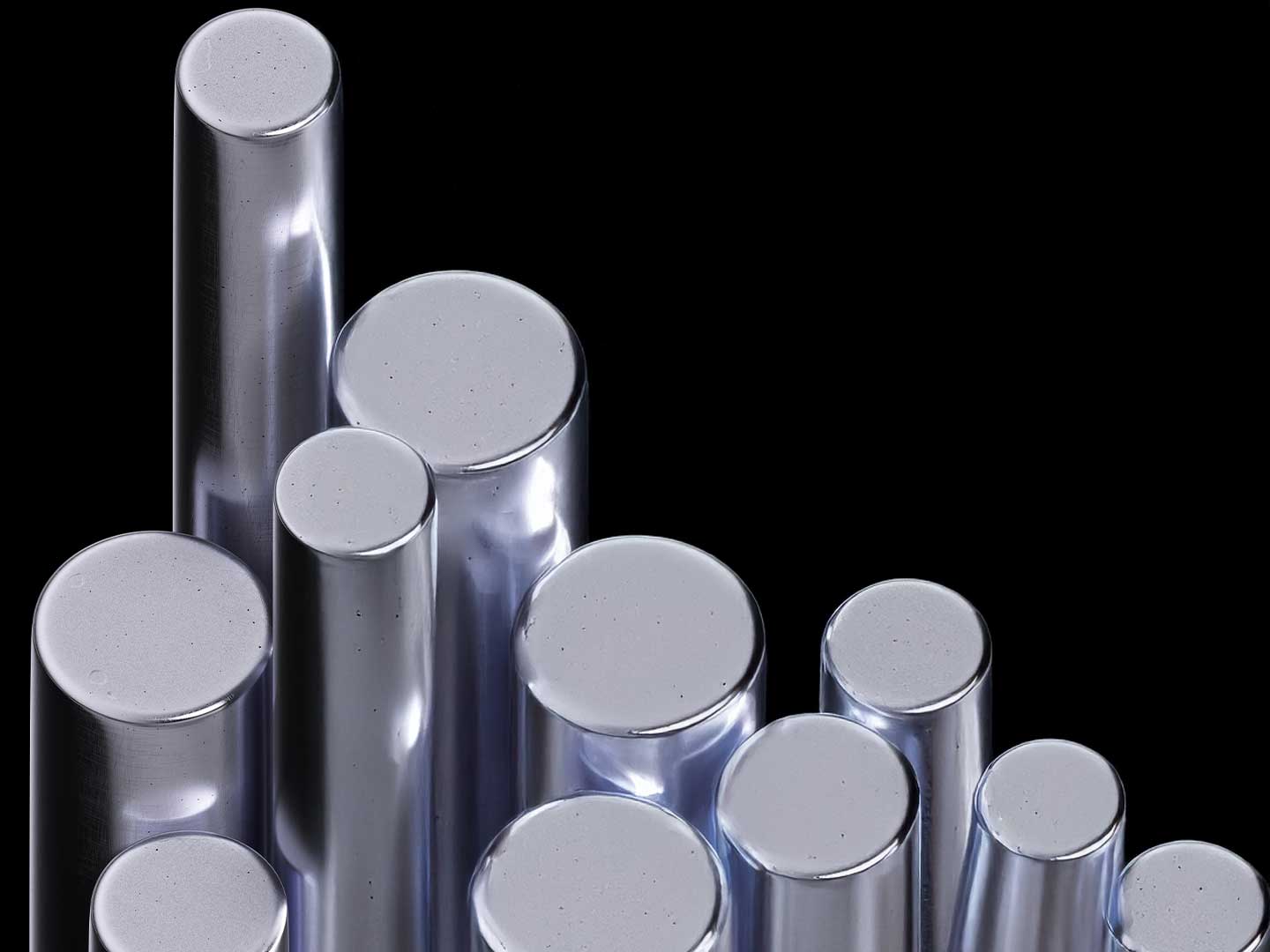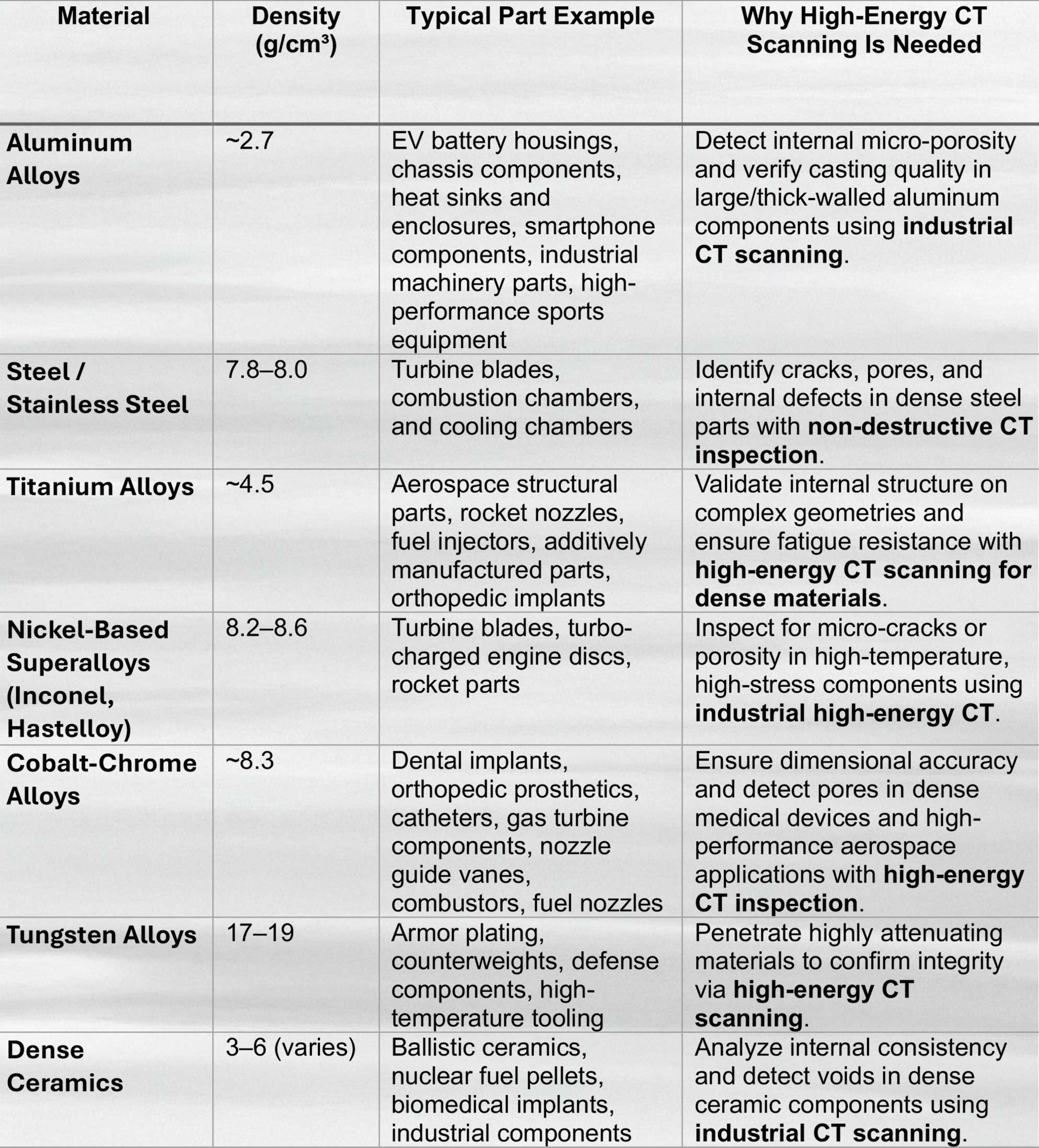
WEBINAR: Unlock the Power of Industrial CT Scanning
See Deeper. Solve Faster. Spend Smarter.
A 1/2 Hour That Could Reshape Your Inspection Strategy
Date: Wed June 18, 2025
Time: 11am Central Time
Location: Live Online Webinar

See Deeper. Solve Faster. Spend Smarter.
A 1/2 Hour That Could Reshape Your Inspection Strategy
Date: Wed June 18, 2025
Time: 11am Central Time
Location: Live Online Webinar
High-energy CT scanning makes non-destructive inspection of large, dense parts possible. Nel PreTech provides accurate, ISO/IEC 17025-accredited results.

Engineers in the fields of aerospace, defense, automotive, or medical can face challenges with large or dense part inspection. Imagine trying to see through a thick, titanium component with traditional scanning methods. Most systems would fall short of being able to penetrate the denser material. This is where engaging with a leading high-energy CT scanning lab like Nel PreTech Corporation becomes a necessity for interrogating dense materials. Our lab uses computed tomography scanning machines from 130kV (Kilovoltage) to 450kV, and higher-energy X-rays in the MeV (Mega-electron-volt) range, capable of handling challenging materials and geometries.
High-energy X-ray CT is used to create a digital 3D model of the internal structure of dense parts or components. Density is defined as mass per unit volume. Materials are considered dense if they have a high mass relative to their volume. During industrial CT scanning, dense materials will significantly attenuate X-rays. High-energy CT produces photons with a higher maximum energy, resulting in better penetration power than standard industrial CT. High-energy industrial radiology is used to inspect pieces made of nickel-based alloys, tungsten alloys, steel, or other high-density materials. Noise, scattered radiation, and beam-hardening artifacts can cause fidelity issues and should be considered when selecting the proper energy level in computed tomography. MeV systems and other advanced techniques can be used to achieve better signal penetration and improved imaging on thicker, denser parts.

Engineers should evaluate key specifications when considering high-energy industrial CT scanning. The list below highlights core technical capabilities and serves as a starting point for discussions with an inspection lab. While not exhaustive, these factors are essential to review with a qualified X-ray inspection provider to ensure accurate, reliable results for dense or complex parts.
There is often a resolution sacrifice when photons are made energetic enough to penetrate dense or thick-walled materials. Image fidelity can be challenged due to scattering and beam hardening artifacts. Beam hardening can cause a darker center and brighter edges on the resulting imaging. Scattering can leave a hazy appearance surrounding the part. High-energy CT scans are not usually a good candidate for metrology, either. Lower kV machines are better at providing higher resolution, refined imaging. For a more detailed explanation of the resolution capabilities of high-energy CT scanning, read this article on 450kV industrial CT scanning. See the differences between low-res and high-res CT scanning in this informative comparison article. Consider consulting a lab with industrial CT scanning accreditation. Nel PreTech is accredited to ISO/IEC 17025 by A2LA, providing customers with the documentation and confidence to make informed decisions about our industrial CT lab services.
This Springfield Armory 1911 Series Handgun was scanned at an 80-micron resolution using a 450kV industrial computed tomography (CT) machine. It allows for visualization of precise detail and material characterization. This is a powerful example of how higher energy can influence the scan results of denser materials like steel:
High-energy CT scanning opens the door to non-destructive, accurate inspection of dense, large components. If you work with Nel PreTech, you can expect high-level engagement from CT experts who understand how X-rays interact with every material. With advanced CT technology created by leaders in precision inspection equipment, trustworthy accreditation, and experienced staff, you will detect defects or validate material performance with ease.
Contact us today for a consultation or request a free quote for high-energy CT scanning.

Mike performs 20 computed tomography scans with failure analysis monthly. His experience in identifying leakage path in drug delivery systems, analysis of numerical measurement data, performing root cause analyses, and educational presentations to prospective clients on benefits and uses of industrial CT scanning analysis has secured his role as a top biller for Nel PreTech Corporation.

You'll find all the detailed service information you need in one brochure.
Download Brochure
Get a quote within 24-hours and keep your project on schedule.
Get a Quote
Our Nel PreTech engineers are ready to get started on your product challenges.
Ask an EngineerDownload the ultimate CT Scanning Buyer's Guide to improve understanding, time, and efficiency in your scanning needs. Over 50 Pages of useful data and case studies.
Download Now